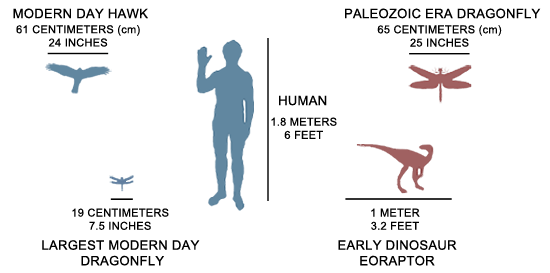From a January 2015 article...
Around 540 million years ago, a host of exotic creatures suddenly appeared. They included giant woodlouse-like creatures known as trilobites, the five-eyed Opabinia, and the spiny slug-like Wiwaxia. Suddenly, Earth leapt from being dominated by single-celled bacteria to a world teeming with exotic multicellular creatures, all in a geological blink of an eye.
For Charles Darwin, trying to demonstrate his theory of natural selection, this sudden burst of evolution was a major problem. “The case must at present remain inexplicable; and may be truly urged as a valid argument against the views here entertained,” he wrote in On the Origin of Species in 1859.
To this day the Cambrian explosion remains a puzzle. But maybe a planet-encasing icy catastrophe could help explain it.
The evidence for a Snowball Earth first emerged in the early 1990s. Unexpectedly, geologists discovered evidence of glaciers – such as stones that had clearly been carried on ice rafts and then dropped - in the tropics. Since then, a growing body of evidence has shown that the global deep freeze began around 715 million years ago, and lasted nearly 120 million years.
Exactly how far the ice extended is still debated. Some argue that the entire Earth was encased in ice, with just a few small pockets of open water where hot springs bubbled up. Others believe that a belt of open water remained around Earth’s equator.
Regardless of how far the ice stretched, most scientists agree that the Snowball formed suddenly. It was probably caused by rapid weathering of Earth’s continents, which sucked carbon dioxide – a planet-warming greenhouse gas – out of the atmosphere and caused temperatures to plummet. There were two distinct pulses of extreme glaciation, interspersed with a 20-million-year warm period. Finally, around 660 million years ago, Earth’s volcanoes topped up the atmospheric carbon dioxide enough to haul the climate out of its frozen state.
So why on Earth would this period of extreme cold cause life to switch gear so rapidly? Maybe, say many geologists, because it pumped lots of life-giving oxygen into the air.
The idea is that the ice gave a boost to microscopic plants, which released oxygen as a waste product. During the Snowball, the glaciers would have worn huge amounts of phosphorus-rich dust away from the underlying rocks. Then, when the ice retreated at the end of the Snowball, rivers washed this dust into the oceans, where it fed the microbes.
“High phosphorus levels would have increased biological productivity and organic carbon burial in the ocean, leading to a build-up of atmospheric oxygen,” says Noah Planavsky of Yale University in New Haven, Connecticut. In 2010 he identified a massive spike in phosphorus levels in sediments from around the world, just as Snowball Earth was ending.
That was suggestive, but in 2014 Planavsky found more direct evidence. His team estimated oxygen levels prior to Snowball Earth, by studying chromium – which exists in different states depending on the amount of oxygen in the air – in ancient rocks. Until 800 million years ago, atmospheric oxygen levels were just one-hundredth of today’s levels.
Planavsky thinks that is far too low to support complex animal life. “In modern low-oxygen environments there is less ecosystem complexity and a more limited range of animal behaviours,” says Planavsky. “So it is reasonable to expect that an oxygen rise would pave the way for animal and ecosystem diversification.”
But there’s a problem with that idea. Experiments published in 2014 showed that some animals can survive with much less oxygen than previously thought. Sponges, one of the oldest kinds of animal, need just 0.5% of modern oxygen levels. That suggests oxygen wasn’t enough of a trigger.
In recent years another idea has come to prominence. Maybe it was the ice itself that drove the evolutionary leap, says Richard Boyle of the University of Southern Denmark in Odense. “There are no animals more complex than a sponge prior to the last of the Snowball glaciation events, and in my opinion this is not coincidence,” says Boyle.
For Boyle the real puzzle isn’t the appearance of multicellular animals. Instead, it’s the rise of cellular differentiation – cells with specific roles like liver, muscle and blood. These specialised cells allowed animals to become much more intricate. “What sets animals apart from plants and fungi is this irreversible cellular differentiation, which, for instance, is what allows animals to have more cell types,” says Boyle.
It’s hard to see how this could have evolved, because specialised cells lose the ability to reproduce on their own. Instead they have to be distinctly self-sacrificing, cooperating with other cells in the body for the greater good of the animal. Only the specialised reproductive cells, the sperm and eggs, get to create a new generation.
By contrast, plants don’t just rely on specialist sex cells to reproduce. They can also reproduce themselves from cuttings taken from their stems or roots. “You can’t take a cutting from an animal,” says Boyle. He thinks the severity of Snowball Earth may have pushed animal cells to abandon this flexibility, and specialise. ...”
more at link...
http://www.bbc.com/earth/story/20150112-did-snowball-earth-make-animals
Oxygen levels are the obvious answer as to why you had the Cambrian explosion. Oxygen is why plants are stationary and animals move, because oxygen gives animals the energy to move (and taxes the plants for making it!). Once life is on the move you get an explosion of forms taking advantage of this new found motion. It fits nicely with the Ice Ball Earth finally melting letting all those hunkered down plants burst with activity.











